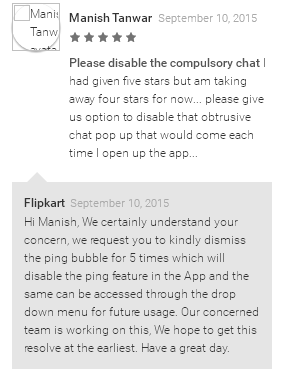Decoding the latest trend, Social Commerce

Just like any other service industry, etailers too have to constantly come up with new ideas for acquiring & retaining customers. The latest crowd puller, which is helping ecommerce companies to attract a large audience, is Social Commerce.
What is Social Commerce?
The simplest definition is,
Online Social Networks + Ecommerce = Social Commerce
Shopping has always been considered as a social activity; a group therapy where friends/family spend hours haggling, trying, sharing opinions and buying things they want.
With ecommerce making a grand entrance, the social experience was exchanged for convenience, variety and discounts. However, with an aim to make online shopping more engaging and collective, etailers are infusing social media platforms with ecommerce. Result: Social Commerce, a trend that is catching up in India.
Who all are doing it?
The trend, which is fairly popular in the US, has been around in India from the past few years. But very recently it is gaining renewed attention after ecommerce biggie Flipkart and fashion etailer Myntra announced their plans to launch social shopping features within their respective apps. Snapdeal too revived its zero commission platform, Shopo in July this year, where users can chat and buy or sell.
Besides these marketplaces, many independent ecommerce sites exist where social commerce serves as the core of their business model. To name a few, there’s Voonik, Klip, Limeroad, Wooplr, Stylecracker, Seenit, Roposo, and Allmemoirs, among many others. They all don’t have similar business models since social commerce is a very flexible and infinite ground to play with.
So much so that social media platforms themselves like Facebook, Instagram, Pinterest, and Twitter are infusing ecommerce in its own platform by introducing ‘buy now’ buttons/pins. So the lines are being blurred as everyone is getting involved in ecommerce through social media.
These companies don’t just exist, but are getting huge investments and churning out great numbers. Voonik raised $5 million in Series A funding from Sequoia Capital and Seedfund in June this year. In March, Limeroad got $30 million in series C funding. Stylecracker raised $1 million, Roposo $15 million in the last two months.
Social Commerce on International Waters
Not just in India, social commerce is one of the biggest contributors to the total retail sales in many countries like US, UK, and China. In US, sales from such platforms are expected to reach $14 billion in 2015 in terms of total online retail revenue.
Fashion apps like, Polyvore, Wanelo, Pose, Fancy, Shopcade, Nuji, Shopa are some of the international social shopping sites that are adored by many.
User reviews
As per Google Play app store, installs of Voonik, Limeroad, Roposo, Wanelo, Ployvore apps is between 1,000,000 and 5,000,000. However, when it comes to reviews, there are haters and many takers, just like everything.
When asked if she likes social commerce as a concept, Reshma Naidu shared with IOS, “I think it’s a great idea. Would love to read reviews, look at different styles and discuss it before buying an attire.” On the other hand, another online shopper, Dimple Yannam isn’t too keen as she said, “I don’t think there’s anything very innovative about this concept. Doesn’t excite me. That’s my honest opinion.”
Flipkart’s Ping is getting mixed reviews. Some are finding it intrusive whereas others are gushing about it. Kunal Sherpa wrote, “Super awesome. The feature of ping is what we needed. Awesome work guyz.” Whereas Manish Tanwar left a comment below the app store, “Please disable the compulsory chat…. Please give us the option to disable that obtrusive chat pop up that would come each time I open up the app.”



Roposo has some great reviews. According to Aakansha Ghai, Roposo is,
“A great app! It’s a complete package of every thing. It’s also a great fashion guide. We can shop, post and even win goodies by participating in contests organised by the team. I just loved it!”

Altavier Young feels Wanelo is, “Pintrest that you can actually BUY. Online shopping made easy for unique style.” Another user Chandler Shennan said, “Wanelo I love wanelo. It knows exactly what I want and finds what I want at amazing deals. Now I can do all of my shopping wherever I go and it comes right to my door.”

Why it works?
It works because it combines the two most favourite activities in today’s times. One is social media, the popularity of which is quite visible looking at the ever-increasing number of social media users. Second is online shopping, about which IOS has written tons of articles that support that fact. The rise of smartphone users and apps has managed to keep everyone glued on their phones and browse 24/7.
Below is the list of things why it works:
- Approval matters. People like to discuss their looks and get an opinion
- Works as a channel to express personal style and be appreciated/feel validated
- Source of honest user reviews and feedback
- Source of discovering new products, styles, designers
- Interactive shopping experience as opposed to an isolated one
- Builds a happy community vibe with likeminded people
Any drawbacks?
Major disadvantage is lack of feedback control.
News spreads like wildfire on social media platforms and reputations can make or break in a matter of few minutes. Competitors can play dirty too and damage marketing campaigns. Negative reviews on public platforms, no matter how absurd or unnecessary, has to be dealt with and companies have to work extra hard in responding and resolving issues immediately.
Besides feedback control, lack of privacy can also be a concern as shared by some Flipkart app users. Also, it’s a time-consuming strategy. An army of people is required to constantly update, share latest posts/deals, reply to comments, address grievances, engage each user and keep them interested.
For now, the platform is used for fashion apparel and accessories largely. Though, furniture, home decor, electronics, handmade products, and kitchen items find mention too.
Social commerce can work wonders for small merchants and fresh designers. The fact that investors are placing their bet on such start-ups is proof enough that it is one of the emerging trends in the retail industry. No wonder, established etailers like Flipkart and Myntra too have embraced this trend.
What do you think about social commerce? Love it? Not so much? Please share your views.
About Author

Editor team is specialized in introducing the marketplace content targeting the Indian online sellers. They plan and coordinate to bring the appealing content for the small businesses on how to partner with the e-commerce sites like Amazon and Flipkart and strategies for improving their online business.
Leave a Comment
